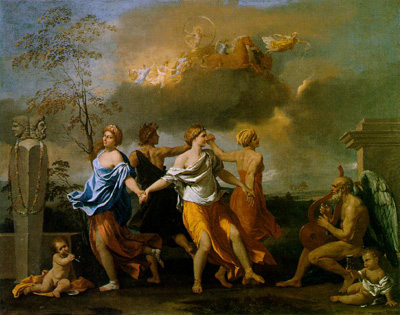The French Academy of Art
Harrison C. White and Cynthia A. White, Canvases and Careers: Institutional Change in the French Painting World (Chicago: University of Chicago Press, 1993), pp.5-7.
In the middle ages painters
had been considered craftsmen, and, like the weavers of
In the passage below sociologists, Harrison C. White and Cynthia A. White, describe how the Academy controlled the system of professional institutions and rewards that shaped the career of artists such as Gérôme's time. |
ARTIST AS LEARNED MAN: TRIUMPH OF THE ROYAL ACADEMY
In consolidating its monopoly of privilege, the Academy also
emphasized a new conception of the artist: no longer an artisan or a low-caste hawker of wares, he was instead a learned man, a teacher of the high principles of beauty and taste. Under Charles Lebrun as rector, the Academy obtained the monopoly on the teaching of drawing "from life," expanded its membership by forcing all "free" painters and brevetaires into its organization, and laid down the ideological framework -- a rigid hierarchy of subject matter by cultural importance, a definition of "correct" style and a program of training to inculcate it -- that was to persist as the basis of the Academic system.
Palace of Fine Arts at the 1855 International Exhibition in Paris |
GOVERNMENT PATRONAGE AND THE NEW ELITE
With its new establishment the Academy had elevated the painter to a higher social position than ever before. Not only did it bestow the status of learned man, an equal of the philosophers and men of letters of the other sections of the
Institut;
but also the Academy was a relatively independent part of the state bureaucracy, and its members were in a position qualitatively very different from that of even the most esteemed court painter, who was, after all, just a higher type of servant. As an example for all to see of what a painter could attain, it was an undoubted influence upon the status of all artists.
Painting was becoming a profession in the middle-class sense. Methods of advancement in the Ecole des Beaux-Arts
[the official French art
school] were as prescribed in principle as those of
St.-Cyr [the French military academy]
.Comforted by this, bourgeois fathers became more willing to send their sons through this official painting system where application and perseverance would produce a publicly discernible record of advancement.

